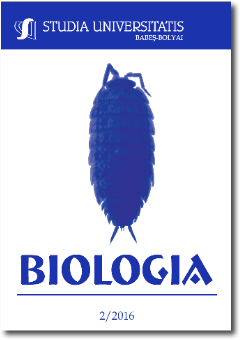Antibiotic sensitivity pattern of bacterial isolates and physico-chemical composition of maize flour sold in major markets in Benin City, Midwestern Nigeria
Keywords:
antibiotic-sensitivity-pattern, bioteriological, maize-flour, markets, physico-chemical.Abstract
Samples of maize flour sold in selected markets in Benin City, Midwestern Nigeria were evaluated for antibiotic sensitivity pattern, bacteriological and physico-chemical qualities. The adoption of pour plate technique revealed a relatively high bacterial count in order of 10 - 103. Nil Salmonella counts were recorded in this study. Bacillus spp. was the most predominant (41.6 %) and the least predominant among the bacterial isolates was Pseudomonas aeruginosa (7.9 %). The various isolated bacteria showed variable patterns to the evaluated antibiotics, with zones of inhibition ranging from 0 mm to 20 mm. pH value ranged from 6.3 to 6.5; percentage moisture content ranged from 11.87% to 12.31%. There was a slight variation in the titratable acidity of the samples (2.10 to 2.56). Percentage fat content ranged from 5.10 % to 5.32 %, while the percentage protein and ash contents had a range of 8.45 % to 9.0 % and 0.85 % to 1.28 % respectively. This study revealed that maize flour from Benin metropolis markets harbored high bacterial counts with an array of antibiotic resistant bacteria. From a public health point of view, the bacterial quality of this relish food item sold in Benin City markets is indeed alarming and as such stringent measures should be adopted to manage the quality and curtail its possible role increasing the incidence of antibiotic resistance among population. However, this flour type was also observed to possess good basic dietary nutritional requirement (pH, moisture content, protein, fat and ash).
References
Associated of Official Analytical Chemists (AOAC) (1984) Official Method of Analysis. 9th ed. Association of Official Analytical Chemist, Washington D.C 595 pp.
Aydin, A., Paulsen, P., Smulders, F. J. M. (2009) The physicochemical and microbiological properties of wheat in Thrace, Turk. J. Agric For. 33, 445-454
Batool, S. A., Rauf, N., Tahir, S. S., Kalsoom, R. (2012) Microbial and Physico-chemical contamination in the wheat flour of the twin cities of Pakistan, Int. J. Food Safety 14, 75-82
Berghofer, L. K., Hocking, A. D., Miskelly, D., Jansson, E. (2003) Microbiology of wheat and flour milling in Australia, Int. J. Food Microbiol. 85, 137-49
Cheesbrough, M. (2000) District Laboratory Practice in Tropical Countries, Part 2. Camridge University Press,434 pp.
Deibel, K. E., Swanson, K. M. J. (2001) Cereal and cereal products, In: Microbiological Examination of Foods, Downes, P. F., Ito, K. (eds.), American Public Health Association, Washington DC, pp. 549-552
Effiuvwevwere, B. J. O., Akoma, O. (1997) Microbiological studies on a Nigerian maize product, Kwoka supplemented with soybean, J. Food Safety 17, 249-259
Ekinci, R., Unal, S. (2003) Some properties of flour types produced in different regions of Turkie II. Reological properties Gıda, J. Food 3, 201-207
Fandohan, P., Hell, K., Marasa, W. F. O., Wingfield, M. J. (2003) Infection of maize by Fusarium species and contamination with fumonisins in Africa, Afri. J. Biotechnol. 2, 570-79
ICMSF (1998) Microorganisms in Foods: 6 Microbial Ecology of Food Commodities. Blackie Academic and Professional, London, pp. 313-346
Imarhiagbe, E. E., Emoghene, A. O. (2006) Microbiological and physico-chemical qualities of cassava flour in Benin City, Trop. J. Environ. Sci. Health 9, 20-23
Kordylas, J. M. (1990) Processing and Preserva¬tion of Tropical Subtropical Foods., 1st ed. Macmilliam Education Ltd; Heind-Mills Bassingstoke - Hampshire pp. 120 -149
Ntuli, V., Mekibib, S. B., Molebatsi, N., Makotoko, M., Chatanga, P., Asita, O. A. (2013) Microbial and physicochemical characterization of maize and wheat flour from a milling company, Lesotho, Intern, J. Food Safety, 15, 11-19
Omogbai, B. A., Ikenebomeh, M. (2013) Microbiological characteristics and phytochemical screening of some herbal teas in Nigeria, Euro. Sci. J. 18, 149-160
Omonigho, S. E., Ugboh, R.O. (1998) Mi¬crobiology and physio-chemical analysis of moin-moin, Nig. J. Microbiol. 12, 69-73
Prescott, M. L, Harley, J. P., Klein, D. A. (2002) Microbiology of food, In: Microbiology 5th ed., McCraw -Hill Companies Inc, New York, pp. 966-969
Spanggard, B., Jorgenses, F. G., Huss, H. H. (1993) Antibiotic resistance in bacteria isolated from three freshwater farms and an unpolluted stream in Denmark, Aquaculture 115, 195-207
Sperber, W. H. (2007) Role of Microbiological Guidelines in the Production and Commercial Use of Milled Cereal Grains: A Practical Approach for the 21st Century, J. Food Prot. 70, 1041-1053
Victor, N., Bekele, M. S, Ntseliseng, M., Makotoko, M., Peter, C., Asita, A. O. (2013) Microbial and Physicochemical Characterization of Maize and Wheat Flour from a Milling Company, Lesotho, Intern. J. Food Safety 15, 11-19
World Food Program (WFP) (2012) Food quality control. www.wfp.org (assessed on 15 November 2012)
Downloads
Published
How to Cite
Issue
Section
License
Copyright (c) 2016 Studia Universitatis Babeș-Bolyai Biologia

This work is licensed under a Creative Commons Attribution-NonCommercial-NoDerivatives 4.0 International License.





